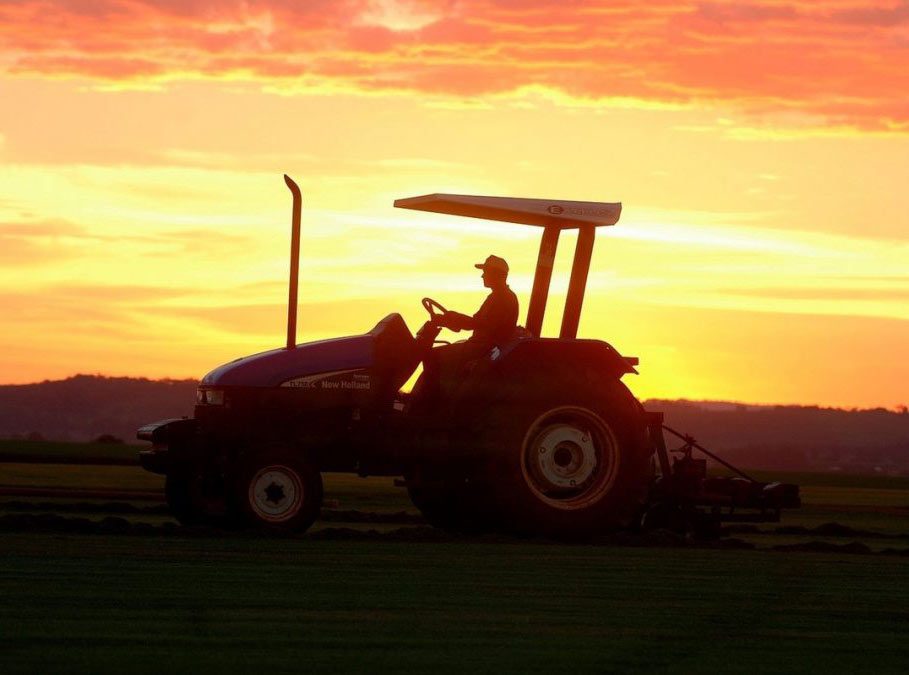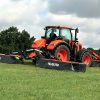Aeration is essentially a process of making small holes in the ground to help air, water, and fertilizer reach plant roots.
Over time, the top layer of soil becomes compacted and forms a hard crust, which makes it hard for water and nutrients to penetrate, and prevents delicate roots from spreading and growing deep enough to produce strong, hardy plants.
An aerator is a tool used to penetrate the soil and increase circulation. For flower beds and tiny gardens, many people use a hand tool like a Garden Weasel – a simple tool with a handle and tines that works by putting enough weight on the tines to sink them.
For large areas, you need a little more power than your own body weight. Aerator implements for your compact tractor come in several styles.
Core or plug aerators dig into the soil and pull up a plug, or core, of dirt. Rather than just breaking the hard layer, plug aerators leave holes that allow the soil to decompress. Tines are arranged on a cylinder or series of wheels on a frame, with 2.5″ to 4″ between spikes.
Core aerators are usually a better option than simple spike aerators for new planting. While spikes are fine for loose soil, creating the space necessary to decompress hard packed soil requires removing and rearranging the soil for maximum circulation. On an existing lawn, spike aerators do less damage to existing grass. Before you buy an aerator, be sure to consider how you’ll use it and the nature of your soil composition.
The size of the aerator and number of tines is matched to the size of the tractor that will pull it. The more powerful your tractor is, the bigger aerator you can pull.
Aerating is similar in nature to plowing, but is a shallower, less disruptive process.
Do I need to aerate?
Aeration is a necessary part of farming and lawn maintenance, but it’s not always necessary. If you’re going to plow, you don’t need to aerate.
Here’s how to know if your lawn or garden needs aerating:
- Water puddles on the ground when it rains and takes a long time to soak in.
- It’s hard to stick a screwdriver or a pencil into the soil.
- Your ground sees a lot of traffic from hooves or vehicles.
- You have soil with heavy clay composition. In Georgia, who doesn’t?
When is the best time to aerate?
It’s important to aerate at the right time of year and under the right conditions. For a garden, this means before planting, in moderate temperatures, and when the ground is moist, but not wet.
Just before fall planting is usually a good time. Test the moisture content of the soil by picking up a handful and squeezing. If it’s too wet, it will compress into a lump. Wait for it to dry out some. Too dry, and it will crumble to dust. Water it well and check back until it’s right. Just right, and it will crumble into loose, moist chunks.
Before you aerate, spread fertilizer over the garden. A plug aerator will pick up the fertilizer with the dirt and mix it all together in the holes, fertilizing the soil up to 5 inches deep.
If you’re not sure about what kind of aerator you need for your compact tractor, come in and ask us about it. We’ll make sure you get the right tool for the size of your tractor and the job at hand.









